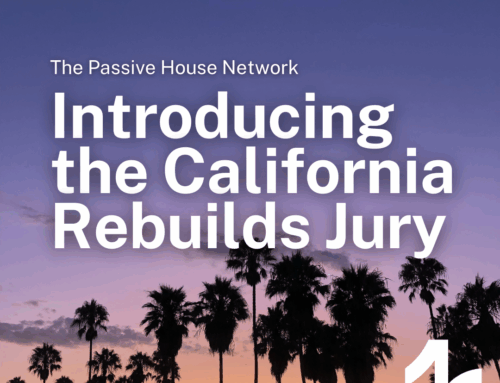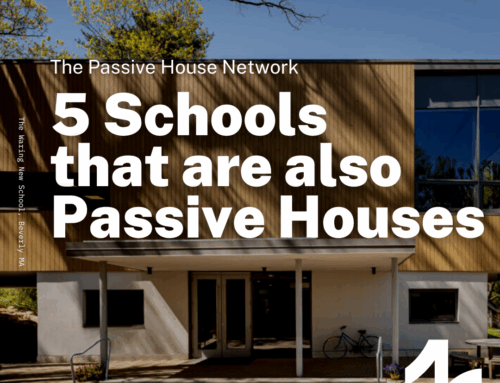North American Passive House Network Announces the Relaunch of Passive House Western PA as Passive House Pennsylvania
Change signifies NAPHN’s growing efforts across the Keystone state.
New York, NY February 26, 2021 – The North American Passive House Network announced today that its chapter, formally known as Passive House Western Pennsylvania, will now be known as Passive House Pennsylvania. The change reflects a desire of the organization to more actively cultivate Passive House activities state-wide.
NAPHN has a track record of working with industry-leading organizations and institutions like Green Building United in Philadelphia, Green Building Alliance in Pittsburgh, and Penn State University in State College. The newly conceived chapter with a state-wide focus will allow NAPHN to grow its efforts with historic allies and reach a wider audience.
“NAPHN is excited to now have a local chapter geared toward knowledge-sharing from one end of Pennsylvania to the other,” said NAPHN Executive Director, Ken Levenson. “We are always looking to find wider connections and commonalities – breaking down barriers and connecting global capacity with regional needs and local applications. Pennsylvania is a big and important state and this move makes certain that we are focused on that fact.”
“Across the Commonwealth, there are so many design professionals and craftspeople, researchers, market-leading owners/developers, and visionary civic leaders deeply engaged in building as climate action,” said PHPA leader Dave Parker. “We are thrilled to broaden our network, share what we are learning, and massively expand our impact through Passive House.”
# # #
PHPA
Contact: Gary Moshier
Phone: 412-915-6943
Email: gary@moshierstudio.com
Website: www.passivehousepa.org
NAPHN
Contact: Ken Levenson
Phone: 917-837-8487
Email: ken@naphnetwork.org
Website: https://naphnetwork.com/
About PHPA:
Founded in 2015, Passive House Pennsylvania’s mission is to fight climate change by driving the transformation of the built environment towards healthier, more equitable, high-performing outcomes through the promotion of the International Passive House Standard.
About NAPHN:
The North American Passive House Network (NAPHN) is an independent national non-profit educational organization affiliated with the International Passive House Association (iPHA) and the Passive House Institute (PHI), located in Darmstadt, Germany.
NAPHN has chapters based in New Jersey (www.njpassivehouse.com), Washington DC (www.passivehousenetwork.org), the Rocky Mountain Region (www.phrockymountains.com), Minnesota (www.passivehouseminnesota.org) and Pennsylvania (www.passivehousepa.org).
NAPHN supports the widespread adoption of the international Passive House design and construction standards, building science principles and protocols, as a critical response to our climate crisis – providing unparalleled effectiveness in mitigating climate disruptions and adapting to rapidly changing environmental conditions.
NAPHN is focused on the inflection point between policy and implementation. We partner with leading stakeholders across all building sectors, including governments, professional associations, manufacturers, owners, builders, labor organizations, and educational institutions – to make the transformation complete. https://passivehousenetwork.org
About Passive House:
Passive House is an international building standard and methodology, applicable to buildings of all kinds from office buildings to hospitals, new-build and renovations, that results in a dramatic
drop in operational energy use, and more comfortable and healthy occupants – meant to aggressively mitigate our climate crisis while providing resilient adaptation.
The Passive House Standard was developed by the Passive House Institute (PHI), an independent scientific research organization, located in Darmstadt, Germany, and includes specific requirements for energy use and comfort of occupants. The Passive House Standard is being successfully applied to thousands of buildings and millions of square feet around the world, from Boston to Beijing.
The Passive House methodology starts with reducing cooling, dehumidification and heating loads by focusing, not on gadgets and active technology, but instead on fully integrated durable passive building components, such as proper continuous thermal-bridge-free insulation, continuous airtightness, high-performance windows and doors, and ventilation that includes a high-efficiency heat/energy recovery core, carefully calculated, and all integrated with the entire architectural process of design and construction. http://www.passivehouse.com http://www.passipedia.org
View an Introduction to Passive house video: https://youtu.be/G1u5q8IbCak
Not sure what Passive House means? Watch this video: https://youtu.be/fy9nnso306o




